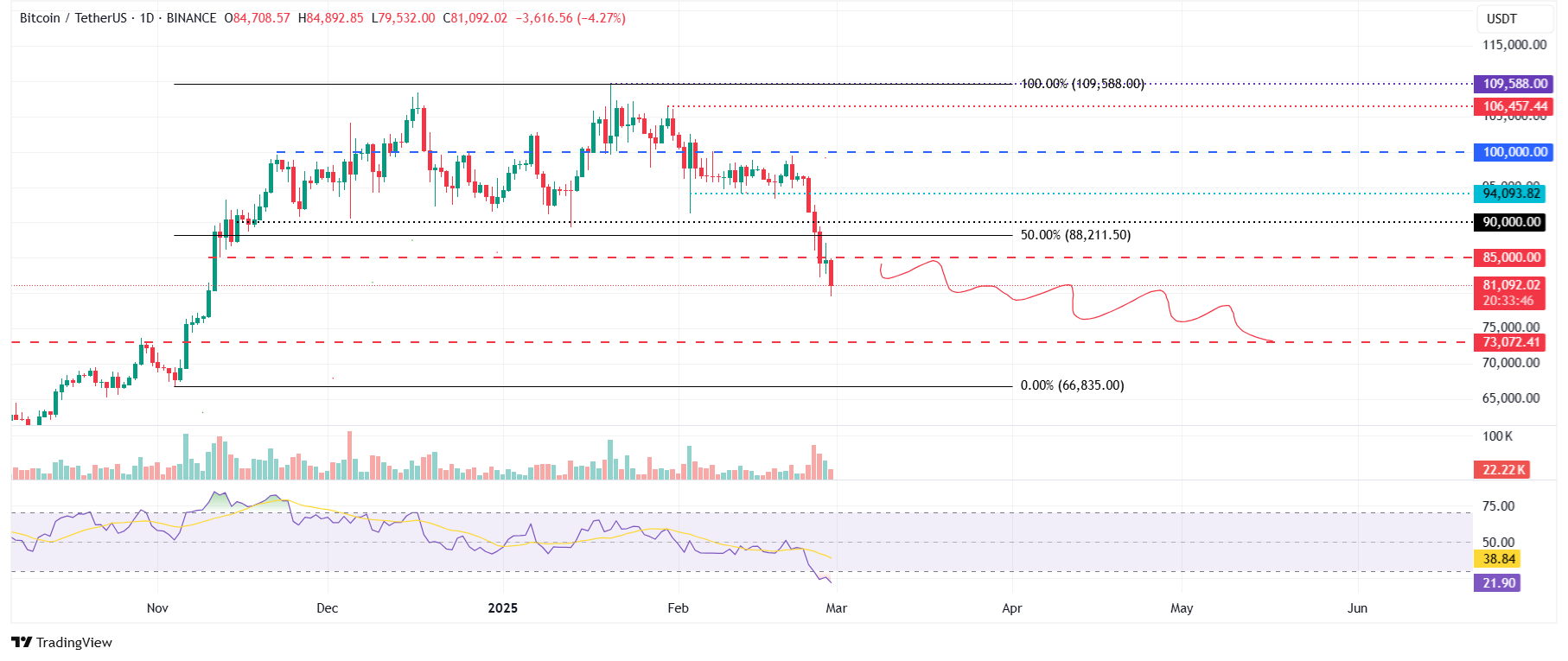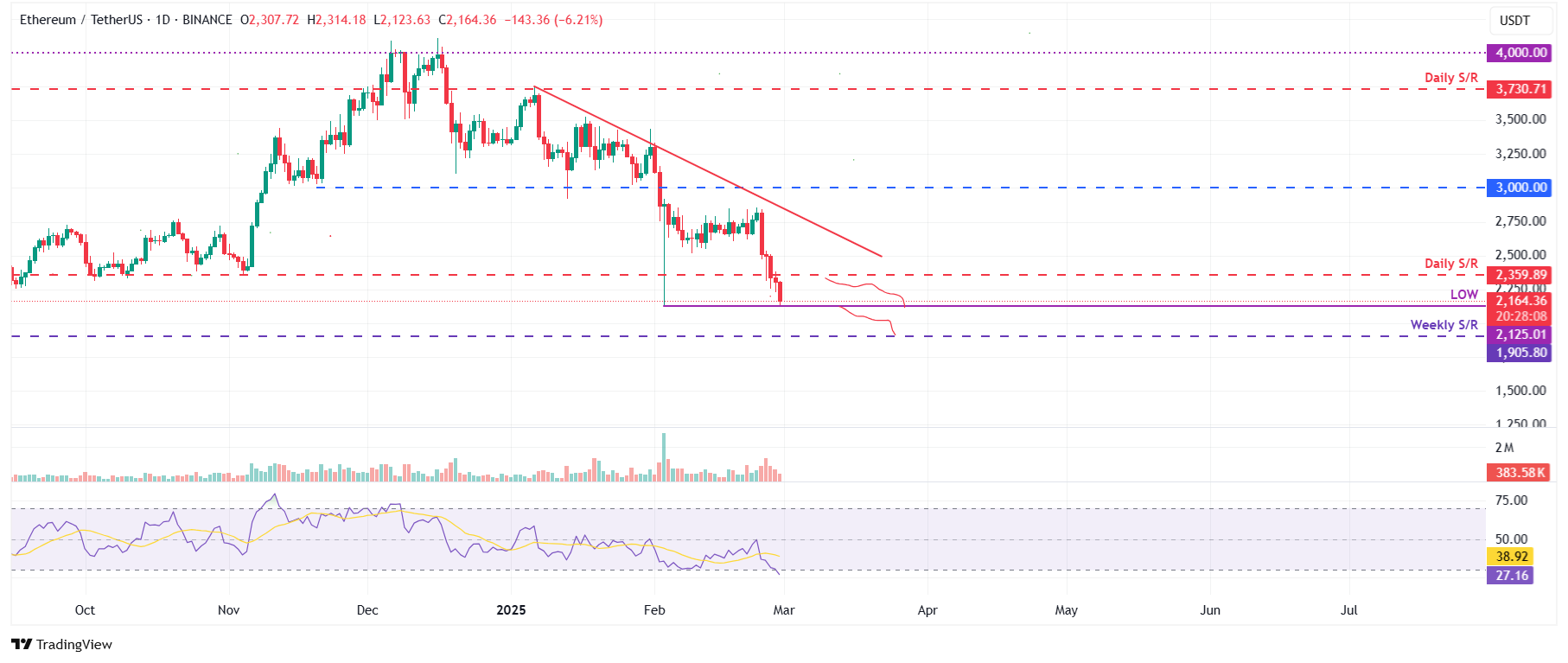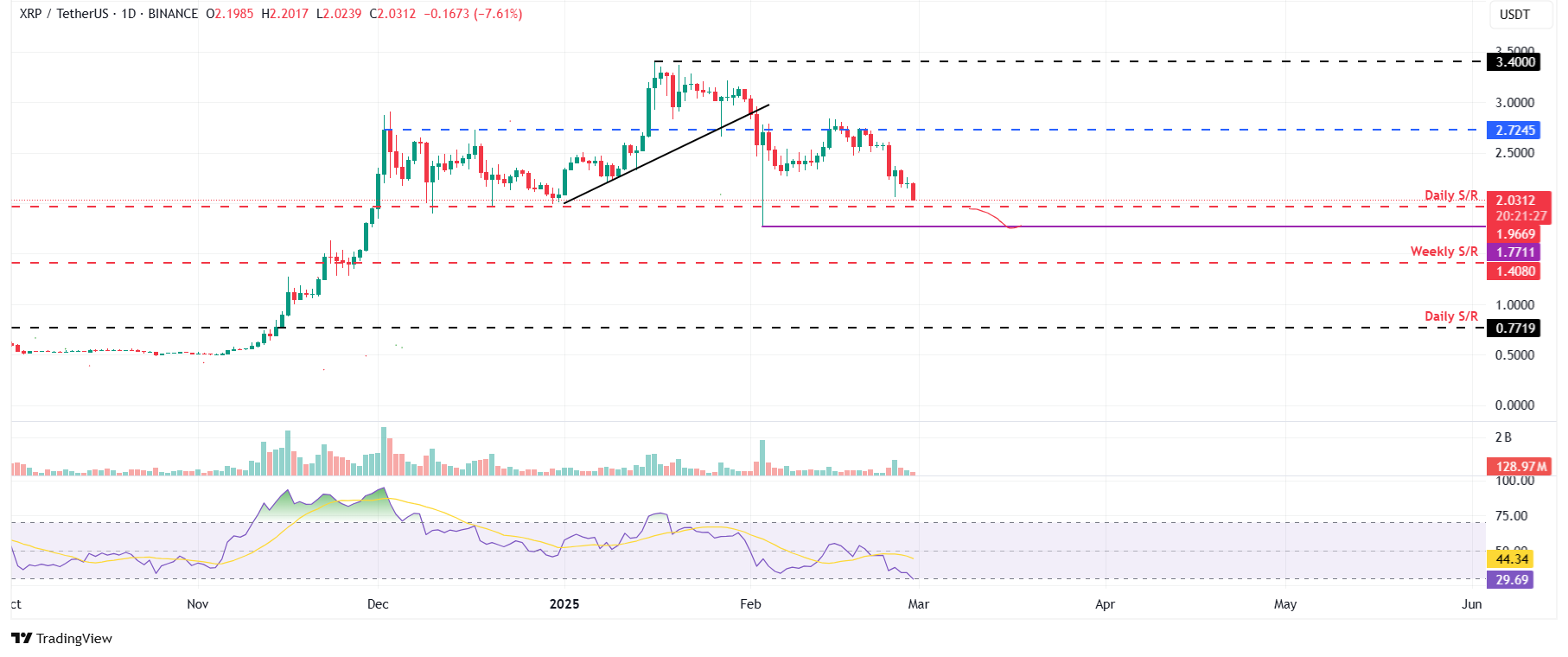- Bitcoin price continues declining on Friday after falling more than 15% this week.
- Ethereum price closed below its daily support level of $2,359, continuing its downward trend.
- XRP is approaching its daily support at $1.96; a firm close below would continue its downward momentum.
Bitcoin (BTC) price continues declining on Friday after falling more than 15% this week. Ethereum (ETH) and Ripple (XRP) followed BTC’s footsteps and declined by nearly 24% and 21%, respectively.
Bitcoin bears aiming for the $73,000 mark
Bitcoin price broke out of its prolonged consolidation phase, slipping below the $94,000 support level and closing at $91,552 after a 4.89% decline on Monday. BTC continued its correction by 8.2% in the next three days and closed below its $85,000 support level on Wednesday. At the time of writing on Friday, it continues its sell-off, trading at around $81,000.
If BTC continues its correction, it could extend the decline to test its next support level at $73,000.
The daily chart’s Relative Strength Index (RSI) indicator reads 21, below its oversold conditions and points downwards, indicating significant selling pressure but technically may be due for a potential reversal or bounce. However, traders should be cautious as the RSI may remain below oversold levels and continue correcting.
BTC/USDT daily chart
However, if BTC recovers, it could extend the recovery to retest the $85,000 resistance level.
Ethereum is poised for further downside if it closes below $2,125
Ethereum price declined almost 11% on Monday. It continued its downtrend for the next three days, declined 8.4% and closed below its daily support level at $2,359. At the time of writing on Friday, it continues its downleg, retesting its February 3 low of $2,125.
If ETH continues its downtrend and closes below $2,125, it could extend the decline to retest its weekly support level of $1,905.
Like Bitcoin, Ethereum’s RSI on the daily chart reads 27, below its oversold conditions and points downwards, indicating significant selling pressure but technically may be due for a potential reversal or bounce. However, traders should be cautious as the RSI may remain below oversold levels and continue correcting.
ETH/USDT daily chart
On the other hand, if ETH recovers, it could extend the recovery to test its resistance level at $2,359.
Ripple bears could target the $1.77 level
Ripple price declined nearly 12% on Monday and reached a daily low of $2.06 the next day. XRP continued its decline by 5.33% until Thursday. At the time of writing on Friday, it trades down by 7.6%, at around $2.03.
If XRP closes below the $1.96 daily support level, it will extend the decline to test its February 3 low of $1.77.
The RSI on the daily chart reads 29, below its oversold conditions and points downwards, indicating significant selling pressure but technically may be due for a potential reversal or bounce. However, traders should be cautious as the RSI may remain below oversold levels and continue to correct.
XRP/USDT daily chart
Conversely, if XRP recovers, it could extend the recovery to test its resistance level at $2.72.
Bitcoin, altcoins, stablecoins FAQs
Bitcoin is the largest cryptocurrency by market capitalization, a virtual currency designed to serve as money. This form of payment cannot be controlled by any one person, group, or entity, which eliminates the need for third-party participation during financial transactions.
Altcoins are any cryptocurrency apart from Bitcoin, but some also regard Ethereum as a non-altcoin because it is from these two cryptocurrencies that forking happens. If this is true, then Litecoin is the first altcoin, forked from the Bitcoin protocol and, therefore, an “improved” version of it.
Stablecoins are cryptocurrencies designed to have a stable price, with their value backed by a reserve of the asset it represents. To achieve this, the value of any one stablecoin is pegged to a commodity or financial instrument, such as the US Dollar (USD), with its supply regulated by an algorithm or demand. The main goal of stablecoins is to provide an on/off-ramp for investors willing to trade and invest in cryptocurrencies. Stablecoins also allow investors to store value since cryptocurrencies, in general, are subject to volatility.
Bitcoin dominance is the ratio of Bitcoin’s market capitalization to the total market capitalization of all cryptocurrencies combined. It provides a clear picture of Bitcoin’s interest among investors. A high BTC dominance typically happens before and during a bull run, in which investors resort to investing in relatively stable and high market capitalization cryptocurrency like Bitcoin. A drop in BTC dominance usually means that investors are moving their capital and/or profits to altcoins in a quest for higher returns, which usually triggers an explosion of altcoin rallies.







